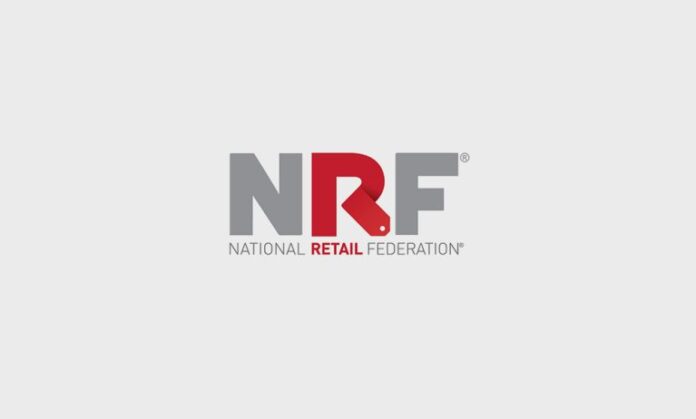(PRESS RELEASE) WASHINGTON — As we dive deeper into 2025, the economic landscape of the United States remains a topic of both intrigue and concern. National Retail Federation (NRF) Chief Economist Jack Kleinhenz recently weighed in on the unpredictable effects that new tariffs and government policies might bear on the economy. His insights reveal a complex narrative threaded with consumer behavior, government intervention, and market uncertainty.
Kleinhenz began by highlighting the upbeat outlook that greeted the start of the year, citing a solid year-over-year GDP growth of 2.8%. This growth was primarily driven by robust consumer spending coupled with both business and government expenditures. However, he noted a distinctive shift in sentiment as anxiety and confusion over economic policies have started to overshadow initial forecasts. “It was difficult to judge how policy changes would impact the economy in early 2025 and it remains so now,” Kleinhenz stated.
The economist characterized the current economic fundamentals as solid, yet emphasized the pervasive atmosphere of uncertainty. This uncertainty, he explained, is fueled by multifaceted issues including tariffs, immigration, and deregulation. Each of these elements presents its own complexities, influencing everything from pricing strategies to consumer behaviors. As businesses navigate the intricate web of tariff rates and their potential impact on inflation, the overall sentiment remains one of caution.
In the July edition of NRF’s Monthly Economic Review, it was emphasized that despite the economic angst, growth is holding up relatively well. While the GDP recorded a slight annual decline of 0.5% in the first quarter—largely attributed to a spike in imports fueled by tariff discussions—Kleinhenz pointed out that private final sales to domestic purchasers rose by 1.9% year-over-year. This figure, although lower than the previous quarter’s 2.9%, still underscores a consistent demand in the private sector.
Inflation, a metric closely watched by economists and consumers alike, ticked up slightly, with the Personal Consumption Expenditures Price Index climbing to 2.3% in May from 2.1% in April. Furthermore, unadjusted figures for personal income and consumer spending respectively rose by 4.5% in May, offering a silver lining. Core retail sales—defined by NRF as excluding auto dealers, gasoline stations, and restaurants—also experienced a healthy year-over-year increase of 3.9% in both May and the first five months of 2025.
On the labor front, the job market seems to have outperformed expectations, with 147,000 jobs added in June. This number hovered just above the monthly average of 146,000 seen over the past year, while the unemployment rate stabilized at 4.1%. Job openings showed a promising rebound, climbing to 7.8 million in June, exceeding the count of 7 million unemployed individuals. “This indicates continued demand for workers,” Kleinhenz remarked, supplying a sense of optimism amid broader economic cautiousness.
As for the impact of tariffs, Kleinhenz noted that while price adjustments have not yet been prominently observed, looming tariff increases may soon infiltrate consumer pricing. “If the large increases in tariffs announced earlier this year take effect and are sustained, they will infiltrate consumer prices, causing a downshift in spending that is likely to spill over into the labor market later in the year with higher unemployment,” he cautioned. This prediction suggests potential ripples that could affect various sectors.
Turning to monetary policy, Kleinhenz asserted that the Federal Reserve is unlikely to cut interest rates imminently; however, a possibility exists for later in the year. Fed officials are keeping a keen eye on “inflation psychology,” a term referring to how consumer expectations regarding future inflation might shape their present spending and saving habits. Understanding this psychological dynamic becomes increasingly essential as short-term price increases arise.
Quantifying uncertainty remains a complex endeavor, but a recent Economic Policy Uncertainty Index—developed by economists from Stanford and Northwestern—has demonstrated a marked reduction, halving since its peak in April, which coincided with heightened pandemic-related concerns.
With the recent enactment of the One Big Beautiful Bill Act, Kleinhenz articulated that numerous dynamics are at play that could significantly reshape the economic outlook, depending on subsequent responses from businesses and consumers. The bill is seen as a double-edged sword, potentially offering business incentives and permanent tax cuts for individuals while fostering enhanced workforce participation. Ultimately, its introduction meaningfully reduces some aspects of fiscal policy uncertainty.
The NRF, as a premier authority on retail industry trends, continues to analyze the multi-layered economic conditions that affect this sector. Reports like the Monthly Economic Review serve as crucial resources for guiding businesses through a tumultuous economic terrain.
